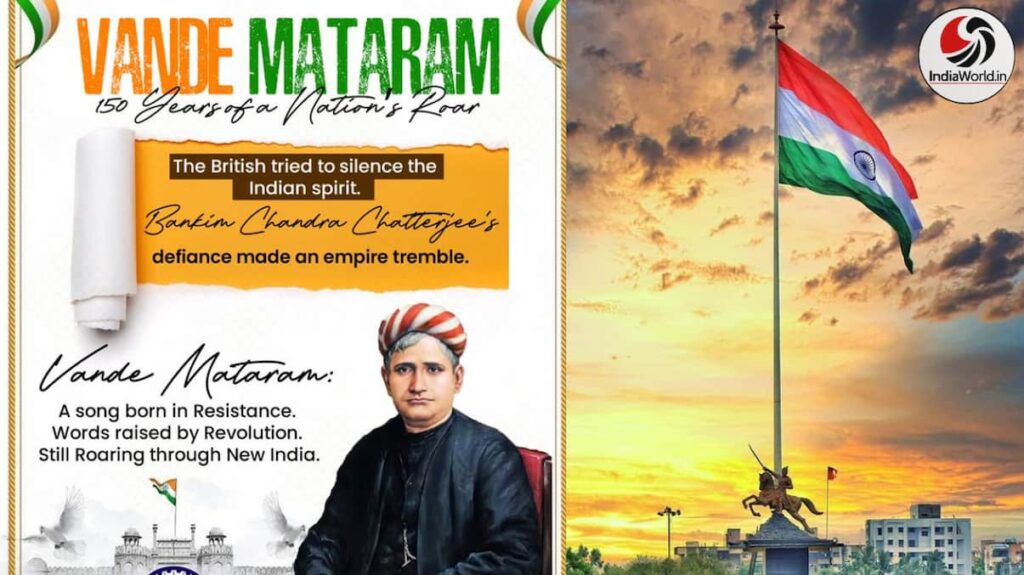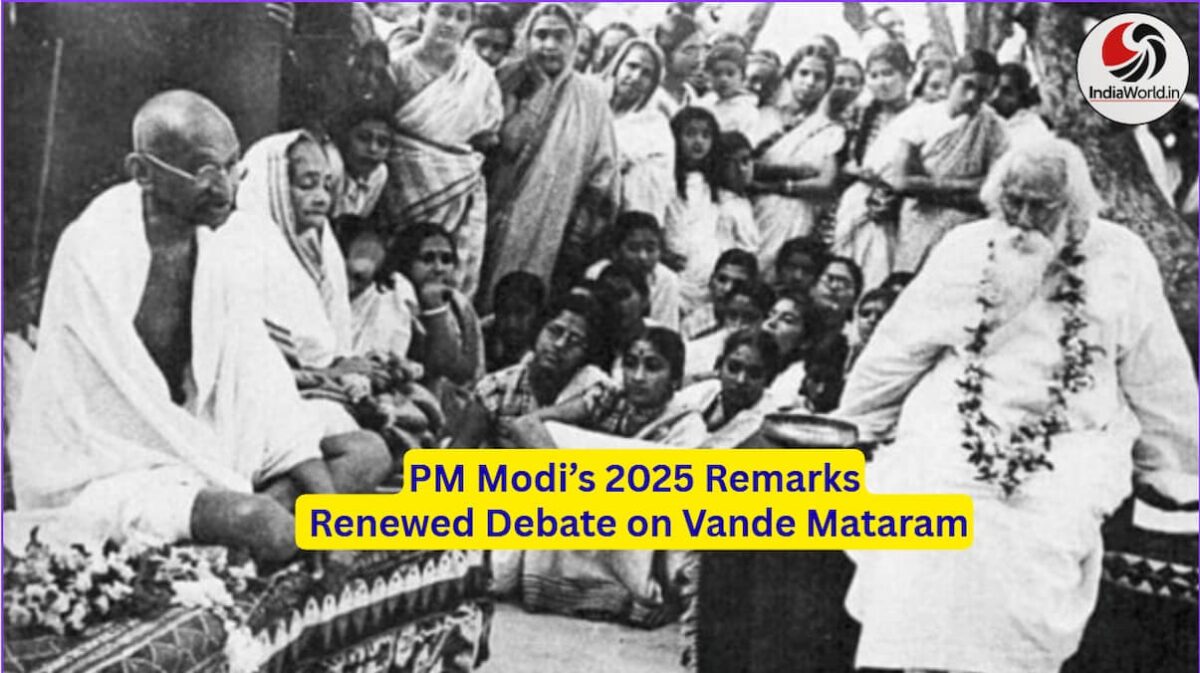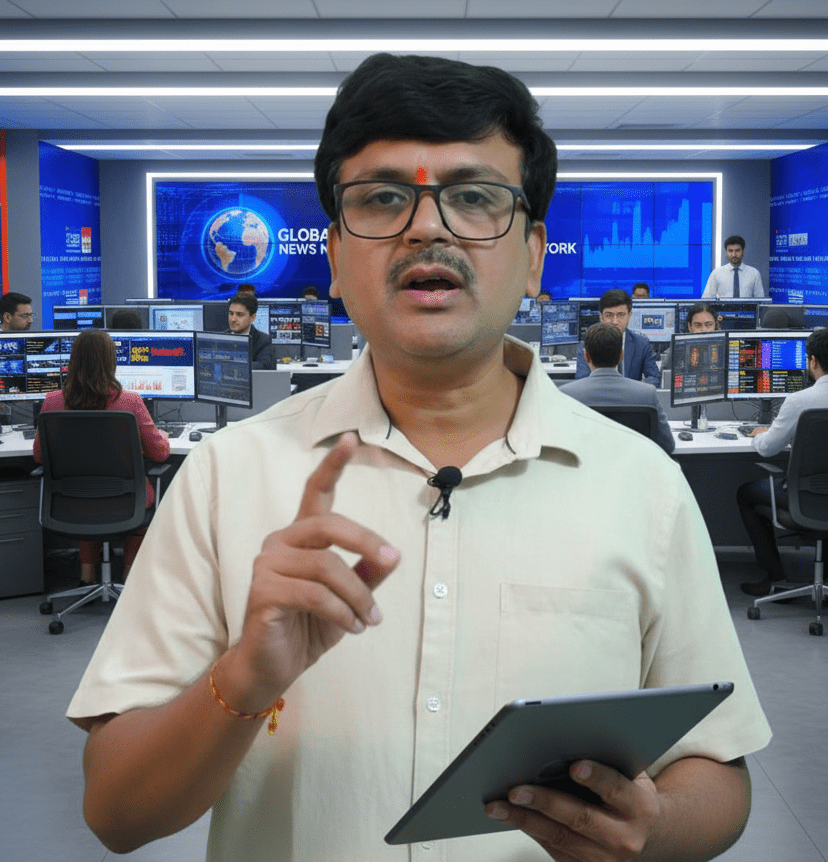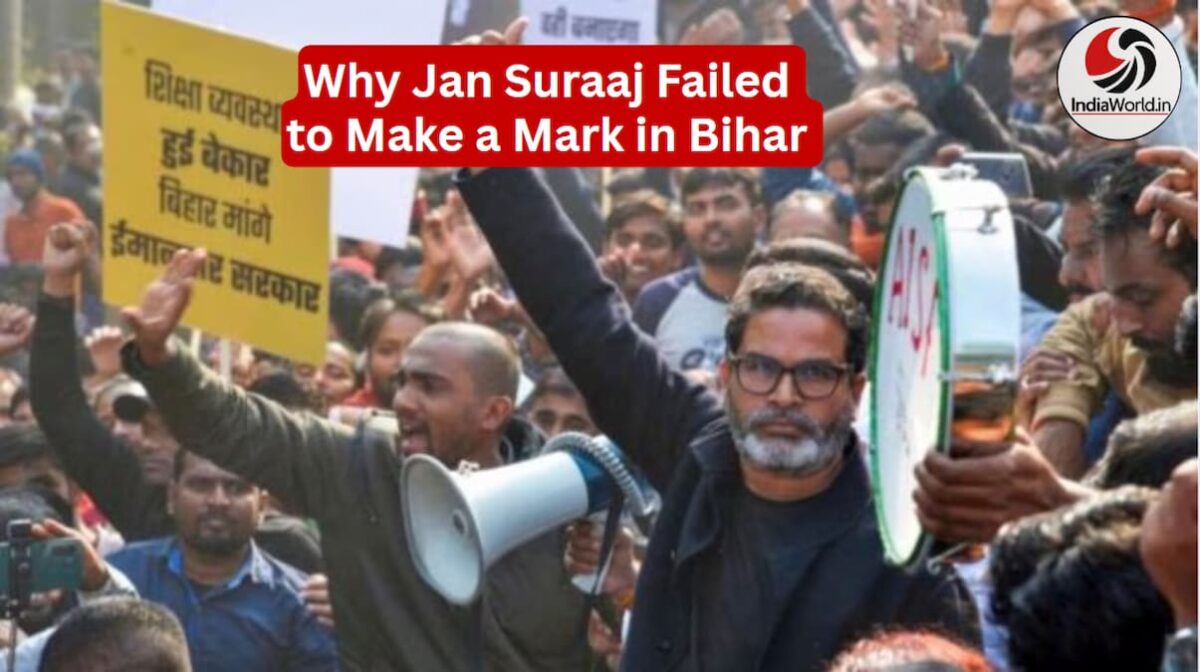Gandhi, Tagore, and the Two Stanzas of Vande Mataram
The Vande Mataram controversy has shaped India’s political and cultural debates for more than a century. Written by Bankim Chandra Chatterjee in 1875, the song became a rallying cry for freedom fighters. Yet its goddess imagery created unease among sections of the Muslim community. Gandhi once compared its use to “Allahu Akbar” during riots, warning that slogans meant to unite were turning into weapons of division. Later, Rabindranath Tagore advised adopting only the first two stanzas, which celebrated nature and the motherland without religious overtones. This compromise, made official in 1937, continues to spark debate even today.

Bankim Chandra’s Vision: From Poem to National Song
- Bankim Chandra Chatterjee composed Vande Mataram during Akshaya Navami in 1875.
- The first two stanzas praised India’s rivers, forests, and fertile lands.
- These verses were published in Bangadarshan magazine and quickly gained popularity.
- Later, Bankim expanded the poem to six stanzas, adding imagery of Durga, Lakshmi, and Saraswati.
- Inspired by the Sannyasi Rebellion, the later verses carried martial tones, depicting the motherland as a goddess with divine weapons.
This blend of natural beauty and religious symbolism made the song powerful but also controversial.
Gandhi Warning: When Slogans Divide Instead of Unite
During the Non-Cooperation and Khilafat movements in 1920, Gandhi noticed a troubling trend.
- Hindu groups shouted “Vande Mataram.”
- Muslim groups responded with “Allahu Akbar.”
- Instead of unity, these slogans became battle cries during riots.
Gandhi argued that national symbols must inspire harmony, not provoke hostility. He respected Vande Mataram but insisted that its use should never alienate any community. His comparison of the song to “Allahu Akbar” was not criticism of faith but a reminder that slogans can divide when misused.
Tagore’s Intervention: Why Only Two Stanzas Survived
By the 1930s, tensions around Vande Mataram had intensified. The Muslim League, led by Muhammad Ali Jinnah, opposed its adoption as the national song. Some leaders even walked out of Congress sessions when it was sung.
Seeking resolution, Jawaharlal Nehru consulted Rabindranath Tagore. Tagore’s advice was clear:
- The first two stanzas had “acquired a separate individuality.”
- They celebrated nature and patriotism without sectarian imagery.
- Later verses, with goddess worship, risked hurting Muslim sentiments.
Tagore’s intervention shaped history. In 1937, the Congress Working Committee—comprising Gandhi, Nehru, Patel, Bose, Azad, and Prasad—formally adopted only the first two stanzas as the National Song of India.
Congress 1937 Decision: A Deliberate Choice for Harmony
The 1937 resolution was not an act of appeasement but a strategic compromise.
- It preserved the universal appeal of the song.
- It avoided alienating Muslims during a fragile period of unity.
- It ensured that Vande Mataram remained a symbol of resistance without becoming divisive.
Jawaharlal Nehru later described the first two stanzas as “tender” and “not offending the sentiments of any community.” This decision reflected the Congress’s effort to balance nationalism with inclusivity.
PM Modi’s 2025 Remarks: Renewed Debate on Vande Mataram
Fast forward to 2025. Prime Minister Narendra Modi reignited the debate by claiming that removing “crucial verses” in 1937 sowed the seeds of division. BJP leaders accused the Congress of altering the song for appeasement.
Historians, however, argue differently:
- The decision was openly debated and recorded.
- The full poem was never banned; it remains intact in literature and culture.
- The exclusions were motivated by unity, not distortion.
This clash between political rhetoric and historical scholarship shows how Vande Mataram continues to be reinterpreted in modern India.
Legacy Today: A Song That Inspires and Divides
Nearly 150 years after its composition, Vande Mataram remains both a hymn of unity and a reminder of India’s contested past.
- It inspired revolutionaries like Sri Aurobindo, who called it the “mantra of patriotism.”
- It was sung during the Swadeshi movement of 1905, becoming the soundtrack of protests.
- It continues to be celebrated in schools, parades, and cultural events.
Yet, its later verses still spark debate. For some, they symbolize strength and devotion. For others, they represent exclusion. The compromise of 1937—adopting only the first two stanzas—remains a delicate balance between heritage and harmony.
Conclusion
The story of Vande Mataram is not just about a song. It is about India’s struggle to define national identity in a diverse society. Gandhi’s warning, Tagore’s wisdom, and the Congress’s 1937 decision all highlight the importance of unity over division.
Today, whether sung in two stanzas or six, the power of Vande Mataram lies in the spirit with which it is embraced. It is both a reminder of resistance and a call for harmony.
📢 Call to Action
Follow us on Arattai & Telegram for more insightful stories:
👉 Arattai Group: aratt.ai/@indiaworld_in
👉 Telegram Channel: t.me/indiaworld_in
📰 Visit IndiaWorld.in for:
Read also : Police Issues Urgent Warning on Fake Cops Cybercrime Calls
FAQs (General Answers)
Is Vande Mataram a national song?
Yes. It was adopted as India’s National Song in 1937, limited to its first two stanzas.
What is the slogan of Vande Mataram?
It became a freedom slogan during the Swadeshi movement and independence struggle.
Is Vande Mataram Sanskrit?
Yes. It was originally written in Sanskrit and Bengali.
What is the full form of Vande Mataram?
It means “I bow to thee, Mother”, referring to the motherland.
What was adopted on 24 Jan 1950?
The National Anthem “Jana Gana Mana” was officially adopted.
What does Vande mean in Sanskrit?
“Vande” means “I praise” or “I bow to.”
Who says Vande Mataram first?
It was first sung publicly by Rabindranath Tagore in 1896 at the Congress session.
What is the history of Vande Mataram?
Written in 1875, expanded later, and became a symbol of resistance during the freedom struggle.
What is the national flag song of India?
There is no official “flag song.” The National Anthem and National Song are recognized.
Which is the real national anthem of India?
The National Anthem is “Jana Gana Mana.”
What is the difference between Vande Mataram and Jana Gana Mana?
- Vande Mataram = National Song, adopted in 1937 (first two stanzas).
- Jana Gana Mana = National Anthem, adopted in 1950.





